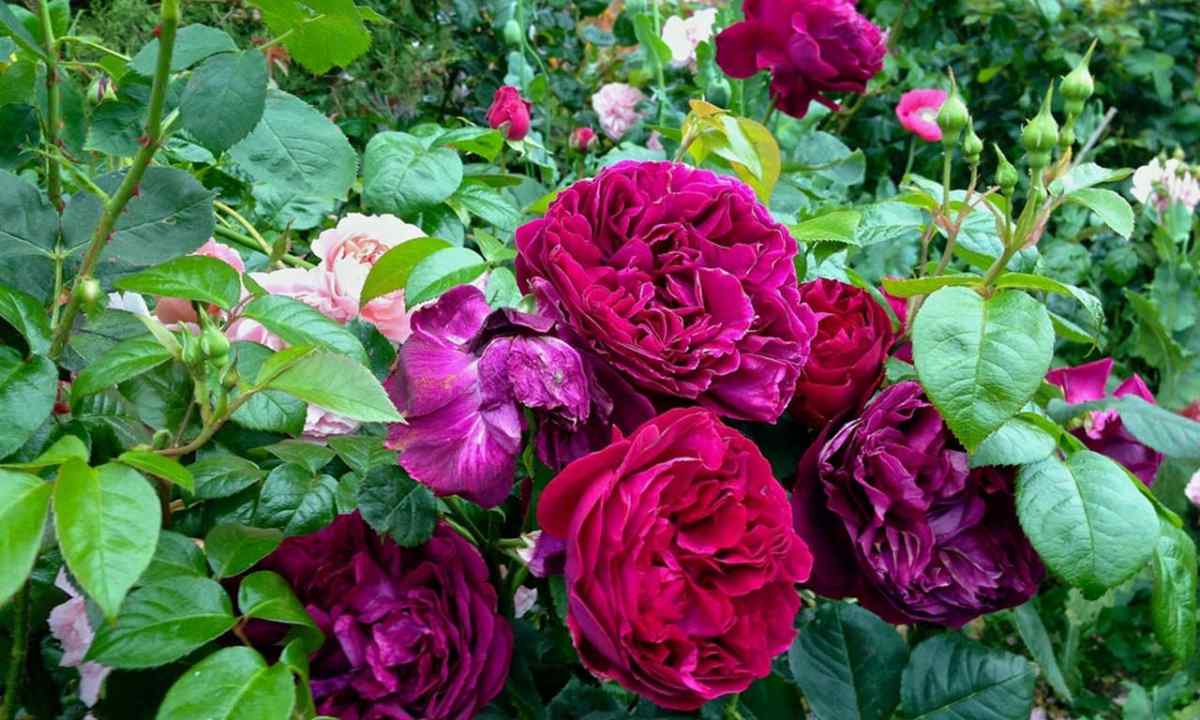Rose of Falstaff from David Austin's collection - the real find for judges of magnificent, fragrant, really effective flowers. High sprawling bushes with volume buds of bright crimson or purple shade are pleasing to the eye all summer, without demanding too difficult leaving.
Rose of Falstaff: history and description
Rose of Falstaff or Falstaff (both options of writing are admissible) – the bright representative of new English rose. The grade is removed by the famous selector David Austin in 1999 on the basis of ancient French park roses, modern tea hybrids and wild dogrose. The novelty has received the name in honor of the famous hero of the Shakespearean play.
The encyclopedia of roses where the grade has been brought at once after official representation, gives the detailed description of plant. Gardeners consider Falstaff grade one of the best representatives in group of purple roses. Strong bushes, tall, with sprawling stalks and abundant dark green foliage. Very effectively look on bed, do not demand strong undercutting and forming. Roses enjoy wide popularity and collect enthusiastic responses of admirers of really magnificent and effective cultivated flowers.
The main advantage of grade – large cup-shaped flowers of terry type. Roundish lobes twist towards the center and form the friable volume socket. External lobes are slightly unbent, creating fancy play of light and shadow. The pink bush covered in flowers looks really magnificently. Buds are dismissed on one or whole brushes on 5 pieces. Escapes can be too long and thin, in this case magnificent heavy flowers hang under own weight. The revealed buds exhale saturated and resistant aroma of rose attar.
David Austin considered great luck bright, but at the same time noble and many-sided color of roses of Falstaff. Just blossomed flowers reddish and crimson, over time external lobes turn pale, and internal get refined burgundy-purple tone. The blossomed rose plays and is poured in the sun, effectively contrasting with dark greens of leaves.
The plant is rather resistant to wreckers, poorly is surprised mealy dew, plant louse, black spottiness. Well winters in soil, transfers temperature differences and insufficient watering. Blossoms during all vegetative period, but in the first wave the buds turn out larger.
Landing and leaving: advice to beginners
High rosebushes of grade Falstaff differ from many park plants from Austin's collection. They should be put in the center of bed as composition dominant, surrounding with more undersized roses. Thanks to long thin escapes the bushes can be used as pletisty roses, having strengthened them on support: to trellised wall of gazebo or pergola. Such support will allow gracefully hanging magnificent flowers not to break. Too highly escapes will not rise, but will close half of wall very quickly.
For landing it is better to choose the imparted saplings from nurseries. It is important to buy the plants adapted for the open ground, they take root better and are ill less. It is better to buy roses in April-May, plant them in completely got warm soil. Before landing bring generous dose of humus in it and carefully loosen. Twice during the season bushes it is worth feeding up complex mineral fertilizer or organic chemistry.
It is the best of all to place roses on the site with soft diffused light. In shadow the flowers become shallow, and escapes are extended. On sun roast the buds lose decorative effect, and sometimes at all are not tied. The wall of the house or gazebo, high bush, pergola will help to provide protection against bright beams.
For normal development the roses need a lot of water. It is convenient to water bushes through specially dug through holes. One more option – the organization of the drop watering which is not allowing the soil to dry up.
